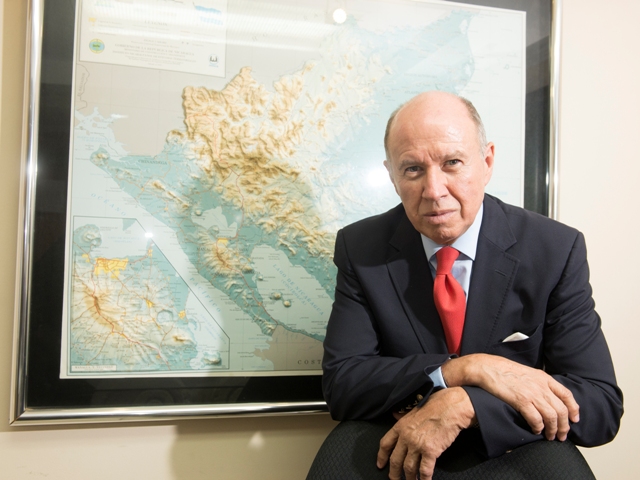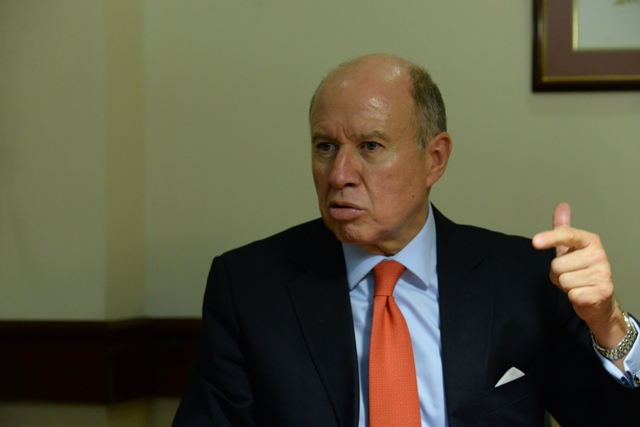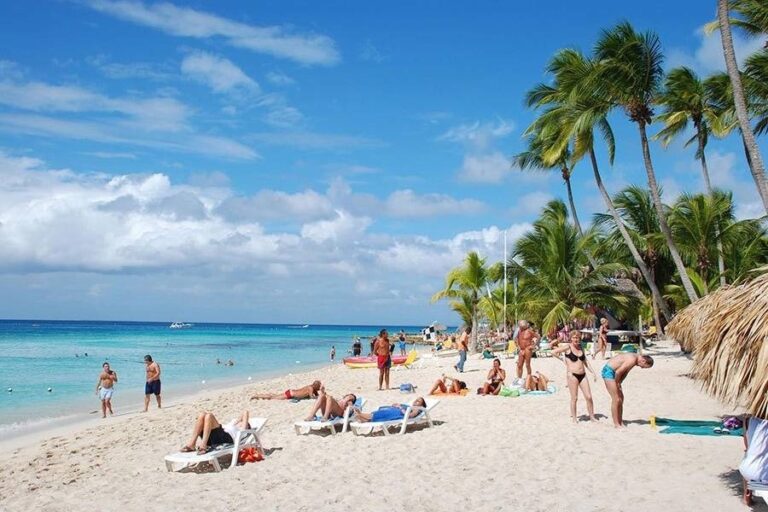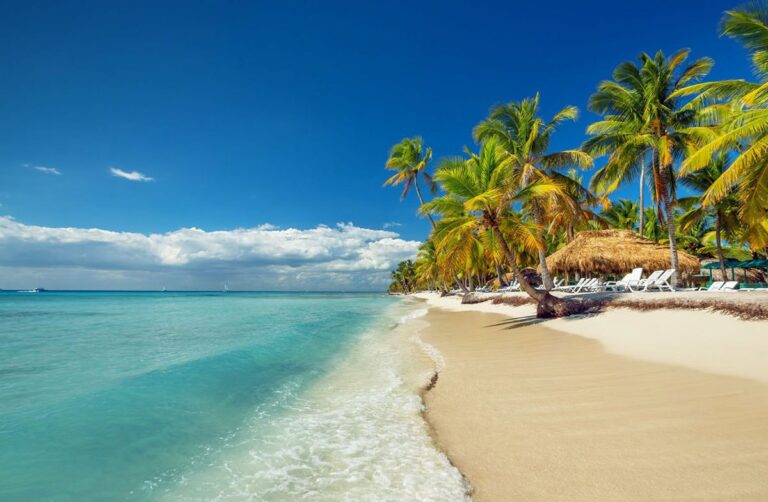Como parte del derrumbe de las fronteras comerciales provocado por la globalización, cada vez es más común aprovechar el modelo de franquicia para hacer crecer los negocios, ya sea en los países donde surgen las ideas o en cualquier otro.
“Una franquicia es una estrategia de crecimiento, una herramienta que permite a los conceptos de negocios exitosos multiplicarse ordenadamente”, explica Juan Manuel Gallástegui, especialista en franquicias.
El especialista de origen mexicano detalla que en una “franquicia encontramos dos jugadores: el franquiciante, que es el titular de los derechos de una marca, el dueño de la marca y del know-how (conocimiento) para la comercialización de un bien o de un servicio. Y por el otro lado al franquiciado o franquiciatario, que es quien adquiere los derechos a comercializar, la licencia de uso de la marca, el know-how para comercializar lo mismo, es decir el que adquiere la réplica ordenada de un concepto exitoso”.
Esta figura surgió en el siglo XIX en Estados Unidos, comenzó a perfeccionarse y a mitad del siglo XX comenzó a tomar fuerza. Llegó primero a América Latina que se convirtió en un gran receptor de franquicias. “Pero en los últimos 25 años nos hemos convertido en desarrolladores de franquicias para multiplicarlas en nuestros países y fuera de ellos”, dice Gallástegui.
¿Cómo funciona el mecanismo de franquicia?
La franquicia no se vende, se otorga. Normalmente se paga una cuota inicial por adquirir la franquicia, es decir el derecho de uso de marca y ese know-how. Después, dependiendo del tipo de franquicia, se paga una contraprestación periódica y otras como las de distribución no pagan esta contraprestación periódica, porque en este caso la ganancia está en el producto que se vende. Por ejemplo, si yo tengo una fábrica de pantalones y quiero venderlos en toda Centroamérica, entonces lo que me interesa es que nos compren una franquicia en donde las tiendas sean iguales y yo pueda vender mis pantalones y no le voy a cobrar una regalía, pero le voy a cobrar un margen dentro del valor del mismo pantalón, porque mi negocio será vender muchísimos pantalones de los que hago en mi fábrica.
Con respecto al tiempo, cada franquicia se otorga por un periodo renovable, el promedio es entre siete y 12 años y una vez concluidos se renuevan, a menos que alguna de las partes no lo quiera.
¿Cómo percibe las ganancias el que otorga la franquicia?
El franquiciatario de sus ventas totales le va a compartir un porcentaje que puede ir del tres al seis por ciento al dueño de la marca al franquiciante. Es un negocio ganar-ganar, es un negocio en donde el franquiciante se va a preocupar porque gane el franquiciatario porque si él gana, ganan los dos, ¿y si pierde? me va a interesar que no pierda porque si pierde —que es el riesgo normal de cualquier negocio—, entonces pierden los dos. Pero hay una cosa que tiene que quedar claro, no hay negocio que no tenga riesgo.
¿Cuál es la situación de las franquicias en Centroamérica?
Están creciendo, desarrollándose. Hace año y medio vinimos a Nicaragua, aunque ya habíamos tenido una primera incursión donde trabajamos conceptos tremendamente exitosos como Tip Top y como Hippos, pero ahora, a partir de hace más de un año que hemos creado nuestra sociedad, nuestra asociación con Central Law, y el crecimiento es mayor. Además, nosotros esperamos que sea mayor. Planeamos trabajar en el desarrollo de siete u ocho franquicias cada año en Nicaragua, para insertar al país en el contexto centroamericano de las franquicias, donde hemos observado que están las franquicias que creamos en Panamá, en Costa Rica, en República Dominicana, formando parte de este contexto que seguramente formará todo un ecosistema junto con Colombia y México, para hacer un área cada vez más poderosa en lo que a franquicia se refiere. Porque en el momento en que la franquicia es exitosa se caen las fronteras, porque si una franquicia es exitosa aquí y tiene un buen producto, tiene una buena forma de comercializarlo seguramente podrá tener éxito en México, en Panamá, en Costa Rica y viceversa, es decir, se vuelve realmente un mercado global.
¿Y en Nicaragua?
Nicaragua es más un receptor que un emisor. Pero eso es normal. En cualquier país hay tres etapas o tres olas. La primera es cuando el país recibe franquicias del exterior y en una segunda etapa empieza a crear sus propias franquicias y en una tercera etapa empieza a exportar sus propias franquicias al exterior, esas son las tres etapas.
Nicaragua creo que está entre la primera y la segunda etapa. Recibe franquicias pero también está empezando a crear franquicias nicaragüenses. Cada vez que vengo a Nicaragua encuentro conceptos que lo único que necesitan es decidirse, decidirse a crecer bajo el modelo de franquicia y como digo muchas veces si no lo hacen ellos, alguien más lo hará y hay muchos casos en toda América Latina de empresas muy exitosas pero que tardaron en decidirse y alguien lo hizo y los borró del mapa. Hasta ahora en Nicaragua las franquicias que hemos trabajado son Tip Top, Hippos, Café Las Flores, Taco Stop.
¿Qué oportunidad tienen las pequeñas y medianas empresas con este modelo de crecimiento?
Ellas son las que tienen oportunidad. Hablar de franquicia es hablar de pequeñas y medianas empresas. Por ejemplo, Sushi Itto es una franquicia mexicana que tiene presencia en Nicaragua, ellos empezaron en 1991 siendo un restaurante de 12 plazas, no 12 mesas, sino 12 sillas en una barra, y hoy tiene cincuenta y tantos restaurantes, es una empresa que da empleo a cerca de setecientas personas. Además, desarrolló paralelamente una empresa que se dedica a proveer todo lo que requiere un restaurante de comida japonesa y acaba de colocar papel en la Bolsa Mexicana de Valores y repito, empezó hace 25 años siendo un “pinche” restaurancito de 12 sillas.
¿Qué requieren las pymes para aprovechar los beneficios de este modelo de negocio?
Ordenarse y acercarse a un consultor que las ayude y tener la certeza jurídica que debe tener cualquier modelo de negocio. Me entusiasma mucho haber puesto mi granito de arena en casos como el de Sushi Itto hay muchos otros casos. Hemos tenido la suerte de trabajar con las grandes empresas… pero esas no me llenan de orgullo, sino las chiquititas. El negocio definitivamente está en las pequeñas y medianas empresas, porque las pequeñas y medianas empresas son las que mueven las economías de Latinoamérica… Los sectores que tienen más oportunidad son desde luego la comida en primer lugar y después cualquier sector.
¿Cuánto cuesta convertir una marca en franquicia? y ¿cuánto adquirirla?
No se puede hablar de un monto específico porque depende del concepto y del negocio. Entonces habrá algunas que cuesten menos y otras más, es muy difícil hablar de cifras, se hace un análisis minucioso de cada negocio para establecer los honorarios. Pero para hablar de un rango, podemos decir que desde los 25 mil dólares hasta 45 mil o 50 mil dólares. Pero un detalle importante es que nosotros encontramos siempre la forma de financiar o darle facilidades de pago al que está invirtiendo. Pero lo más importante es que esa inversión se recupera rápidamente, con la venta de una o dos franquicias y definitivamente, no va a vender una o dos, va a vender muchas más, entonces es una consultoría tremendamente rentable.
¿Quiénes pueden franquiciar su idea de negocio?
¿Cuánto tiempo debe tener un negocio para definirse, para probar su éxito?
[:en]
As part of the collapse of trade frontiers brought about by globalization, it is increasingly common to avail of the franchise model to increase business, whether in country where the idea originally arises or elsewhere.
«A franchise is a growth strategy, a tool that allows successful business concepts to multiply neatly,» explains franchise specialist Juan Manuel Gallástegui.
The specialist of Mexican origin explains that in a «franchise» there are two players: the franchisor, who is the owner of the rights of a brand, the one who owns the brand and the know-how to market a product or service. And then there´s the franchisee, who is the one who acquires the rights to market or the license to use the brand or the know-how to market it, in other words, the one who acquires the organized replica of a successful concept.»
This figure emerged in the United States in the nineteenth century, and began to improve and by the mid-twentieth century began to gain ground. It first spread to Latin America, which went on to receive a great number of franchises. “But, in the last 25 years, we have become franchise developers, propagating them in our own countries and abroad,” says Gallástegui.
How does the franchise mechanism work?
A franchise is not sold, it is granted. An initial fee is usually paid to acquire the franchise, i.e., the right to use the brand and the know-how. Then, depending on the type of franchise, some pay a periodic fee while others, such as distribution franchises, do not, because the profit is in the product that is sold. For example, I have a trouser factory and want to sell my product throughout Central America, I would like a franchise to buy my product where all the outlets are the same and I can sell my pants. I won´t charge a royalty, but I will charge a margin within the value of the pants, because my business will be selling lots of pants that I make in my factory.
Regarding the duration, each franchise is granted for a renewable period, the average being between 7 and 12 years, and usually renewed upon expiry, unless one of the parties does not want to.
How does the franchisor make a profit?
The franchisee shares a percentage, anywhere between 3% and 6%, of his total sales with the owner of the brand, i.e., the franchisor. It is a win-win business. It´s a business where the franchisor cares if the franchisee makes a profit because if he does, they both win …. And what if he loses? I would be concerned that he doesn´t lose – which is the normal risk of any business – then we both lose. But one thing must be clear, no business is without risks.
Where do franchises stand in Central America?
Growing, developing. We came to Nicaragua a year and a half ago, and although we´d already had a first launch where we worked on extremely successful concepts like Tip Top and Hippos, now, more than a year since we formed our partnership, our association with Central Law, growth is greater and we expect it to get even greater. We plan to work on developing seven or eight franchises every year in Nicaragua, to insert the country in the Central American context of franchising, where we have seen the franchises we created in Panama, Costa Rica, Dominican Republic, becoming a part of this context that surely will form an entire ecosystem together with Colombia and Mexico, making the area more and more powerful as far as franchising is concerned. Because the minute a franchise is successful borders dissolve, because if a franchise is successful here, has a good product, a good marketing strategy, it will certainly be successful in Mexico, Panama, Costa Rica and vice versa, in other words, it really becomes a global market.
And in Nicaragua?
Nicaragua is more a receiver than an issuer – but that´s to be expected. All countries go through three stages or phases. The first is when the country receives franchises from abroad, the second is when the country starts creating its own franchises and the third phase is when that country starts exporting its franchises – they´re the three stages.
I think Nicaragua is between the first and second stages. It receives franchises but it´s also starting to create Nicaraguan franchises. Every time I come to Nicaragua I come across ideas that they need is the decision, deciding to grow under the franchise model and, as I always say, if they don´t do it, someone else will. Throughout Latin America there are many cases of very successful companies who dallied too much in deciding and someone else stepped up to the plate and wiped them off the map. To date, the franchises we have worked on in Nicaragua are Tip Top, Hippos, Café Las Flores and Taco Stop.
What chances do small- and medium sized business have with this growth model?
They are the ones with the opportunity. Talking about franchising is talking about small and medium businesses. For example, Sushi Itto is a Mexican franchise with outlets in Nicaragua. They started in 1991 a restaurant with 12 seats, not 12 tables, 12 chairs in a bar, and today it has over fifty restaurants employing some 700 people. In addition, it developed a company in parallel focused on providing everything that a Japanese restaurant requires and has just been listed on the Mexican Stock Exchange and, I repeat, it started out 25 years ago as a «measly» restaurant with 12 chairs.
What do SMEs need to avail of this business model?
Get organized and approach a consultant who will help them and have the legal certainty that any business model should have. I am delighted to have added my grain of sand to cases like Sushi Itto, there are many other cases. We have been fortunate to work with large companies … but they don´t fill me with pride, the little ones do. Business is definitely in small and medium enterprises, because small and medium enterprises are the ones that move Latin America economies… The sectors that have the most opportunity are, of course, food, in the first place and then any sector.
How much does it cost to convert a brand into a franchise and how much to buy it?
You can´t talk about a specific amount because it depends on the concept and the business. Then there will be some that cost less and others more, it´s very hard to speak of figures, a thorough analysis of each business is made to establish the fees. But to give an idea of the range, we can say from 25 thousand dollars up to 45 or 50 thousand dollars. But an important detail is that we always find the way to finance or give payment facilities to whoever is investing. But even more important is that you recover your investment quickly, with the sale of one or two franchises and in the end, you won´t just sell one or two, you´ll sell many more, so it´s a tremendously profitable consultation.
Who can franchise their business idea?
I always say that the possibilities are endless, from marriage agencies to cemeteries, which are practically the same. You can franchise everything that meets certain conditions. First I would say business concepts that have a market. I said that franchising is a growth tool, if my business concept has no market, why grow? If the idea is for a swimwear franchise in Alaska it´s going to be very complicated, or fur coats in Managua not easy either, so the first thing is to have market. Secondly the business concept must be defined, and it is complicated to define what a defined concept is, but very easy at the same time, it is a proven concept, a concept that is already went wrong, mended the errors, and is now doing things properly, i.e., a proven, defined concept. Somehow, saying we say we do not franchise ideas but tried and tested concepts, explains it very well.
How long should a business have to be defined to prove its success?
I don´t know. I have come across concepts that are consolidated and defined after six months, because maybe their owners had great experience and managed to define and consolidate it very well. But I have also come across concepts that are six or seven years old and are still not as consolidated as required.
So, the requirements are: First, a market; Second, a well proven, defined, consolidated concept; Third, a registered trademark, let´s remember here that the two elements of a franchise are brand and know-how, so the brand has to be registered with the trademark authority of each country; Fourth, the concept has to be commercially attractive; I think almost any concept is commercially attractive, that means someone wants one like mine, like my business. When they come to us we ask the vast majority of our clients why they decided to franchise. They tell us that many people left them notes in the comments box of the establishment or sent emails, showing their interest in the business, saying they want one just like it. That is what being commercially attractive means. A fifth requirement is that the business is economically attractive, at a certain time we have to prove that the concept is a good business, no one is fighting with their money, I could love a concept but if I don´t find it financially attractive, so much so that I will invest money and not only will I recover that money but I will make a profit, that is being financially attractive. And finally the sixth requirement is that the concept, the business that we are going to franchise, must be repeatable and transferable. That means that there can be no physical or human barriers to its replication.
This thing about physical and human barriers means that there are businesses whose success is their location, nothing more. The place can be good, bad, indifferent, expensive, cheap, but it´s the location, then there is a physical barrier. At the Eiffel Tower in Paris, for example, there is a restaurant called Jules Verne that is irreplaceable because it is in the Eiffel Tower of Paris and that is its success, its location. But there are also businesses whose success is due to the person running them and people can´t be cloned and we know that if he is not there, his concept is not successful, as is the case signature cuisine restaurants whose success depends strictly on the chef.
So when I have a business that brings together these six elements: having a market, a defined concept, a brand that is commercially attractive, financially attractive, repeatable and transferable, I can replicate it as a franchise.
And there have been many businesses that have happened this way, I can say that globally there are more than forty thousand companies that have grown using the franchise model, the franchise has become a very powerful growth tool for them. If we think that there are very powerful franchise networks that get to have five thousand, ten thousand, fifteen thousand, thirty thousand points of sale all belonging to different entrepreneurs. In addition, another enormous advantage that franchises have, they allow others to participate in my success and others to participate in their success.
Source: La Prensa[:]




